This site uses cookies as defined in our Cookie Policy, by continuing to use this site you agree to their use.
Continue
| Arrive | Depart | ||||||
| 19th19 | JulJul | 202121 | Leith, Scotland, embark on the MS Seaventure | ||||
| Arrive in Leith, near Edinburgh, where you will board MS Seaventure for the start of this fascinating cruise of Scotland. The dedicated crew are there to welcome you on board, ensuring you settle in and familiarise yourself with your contemporary surroundings. Perhaps enjoy your favourite drink on the deck as this beautifully made ship elegantly cruises north along the Scottish coast. | |||||||
| 20th20 | JulJul | 202121 | Aberdeen, Scotland | ||||
| With close to 220,000 inhabitants, Aberdeen is Scotland's third most populous city. Locally quarried grey granite was used during the mid-18th to mid-20th centuries for many of Aberdeen's buildings, and hence the nicknames it has earned as the Granite City, or the Grey City. Aberdeen granite was also used to build the terraces of the Houses of Parliament and Waterloo Bridge in London. Since the discovery of North Sea oil in the 1970s, Aberdeen has also been called the Oil Capital of Europe or the Energy Capital of Europe. It is no wonder that because of the oil fields in the North Sea, Aberdeen's seaport is very important. The Heliport with its flights to the oil fields is one of the busiest commercial heliports in the world. As you enjoy a delicious breakfast in the well-appointed restaurant or sip your morning coffee on the deck, cast your eyes ashore to see we have moored in the historic port city of Aberdeen. This morning’s visit has a royal seal of approval, as we visit the breathtaking Balmoral Castle, famously owned by Queen Elizabeth II. Relax and take in the views as we travel by coach through Cairngorms National Park, a haven for spectacular British wildlife. As if by magic, the iconic Balmoral Castle comes into view, with its imposing grey turrets set back against its verdant surroundings. Enjoy a self-guided visit of Balmoral Castle to learn more about its fascinating past, before returning to the ship for lunch on board. (Note that if the Queen is visiting, there is no access to the public and there will be an alternative activity planned). This afternoon we explore a little closer to our mooring with a guided tour of Aberdeen, Scotland’s third largest city located on the mouths of the River Dee and River Don. This evening, after a delicious meal on board, enjoy the twinkling coastline views before our night time sailing along the North Sea. | |||||||
| 21st21 | JulJul | 202121 | Invergordon, Scotland | ||||
| The port of Invergordon is your gateway to the Great Glen, an area of Scotland that includes Loch Ness and the city of Inverness. Inverness, the capital of the Highlands, has the flavor of a Lowland town, its winds blowing in a sea-salt air from the Moray Firth. The Great Glen is also home to one of the world's most famous monster myths: in 1933, during a quiet news week, the editor of a local paper decided to run a story about a strange sighting of something splashing about in Loch Ness. But there's more to look for here besides Nessie, including inland lochs, craggy and steep-sided mountains, rugged promontories, deep inlets, brilliant purple and emerald moorland, and forests filled with astonishingly varied wildlife, including mountain hares, red deer, golden eagles, and ospreys. This morning we awake in Invergordon, a town and port in Easter Ross proud of its naval heritage. Nestled in the Cromarty Firth, this charming port is one which larger ships wouldn’t ordinarily be able to access, making it the perfect stop to effortlessly explore Inverness and the famous Loch Ness. Your exploration of this area begins today with a guided walking tour of Inverness. The quaint town of Inverness, home to castles and cathedrals is perfect for exploring on foot. On your walking tour you will visit the main sights of this capital of the Highlands. Get ready to see the Inverness Town House, a stunning baronial house, plus Inverness Castle with its magnificent views over the city. The Victorian Market, another of your stops, is full of quaint boutique shops, as well as the Old High Church and graveyard, as mentioned in the Outlander series of books and the majestic St Andrews Cathedral, built in 1158. Next, we take a scenic drive along Scotland's most famous waters, Loch Ness. Loch Ness is the second largest loch by surface area and the largest by volume in the British Isles and is most associated with sightings of the legendary Loch Ness Monster. We uncover stories of a bygone era on a picturesque drive around parts of the loch, stopping to enjoy spectacular views with commentary from your knowledgeable guide. A favourite calling point for many will be the stop overlooking Urquhart Castle, one of Scotland's most iconic castle ruins. We return to the ship for a late lunch, with the afternoon free to enjoy as you wish before our early evening departure. (B,L D) | |||||||
| 22nd22 | JulJul | 202121 | Kirkwall, Orkney Islands, Scotland | ||||
| In bustling Kirkwall, the main town on Orkney, there's plenty to see in the narrow, winding streets extending from the harbor. The cathedral and some museums are highlights. Overnight our agile ship has made its way to the most northerly point on our cruise, Kirkwall, the largest town in the Orkney archipelago. Our insight into this stunning part of Scotland begins with a scenic tour of UNESCO-listed Neolithic Orkney, including visits to Skara Brae and Skaill House. We then head west and visit the Standing Stones of Stennes, before visiting the Ring of Brodgar, the mystical stones which form one of the most fascinating prehistoricmonuments in the British Isles. Your journey continues on to Maeshowe, where you will enjoy a guided tour of the finest chambered tomb in northwest Europe, more than a staggering 5,000 years old. There will be time to explore Kirkwall, after a late lunch on the ship. Later this afternoon your ship will begin to make its way to spectacular Stornoway, so why not find a spot on deck or by a panoramic window to take in the unforgettable views? | |||||||
| 23rd23 | JulJul | 202121 | Stornoway, Isle of Lewis, Scotland | ||||
| Tour description Stornoway, Scotland The Isle of Lewis and Harris is the northernmost and largest of the Outer Hebrides-the Western Isles in common parlance. The island's only major town, Stornoway, is on a nearly landlocked harbor on the east coast of Lewis. It's the port capital for the Outer Hebrides and the island's cultural center, such that it is. Stornoway has an increasing number of good restaurants. Lewis has some fine historic attractions, including the Calanais Standing Stones-a truly magical place. The Uists are known for their rare, plentiful wildlife. Stornoway. Besides being the island's main entry point for ferries, Stornoway is also Lewis's main arts center. You'll find some good restaurants in town if you want to have lunch off the ship. The town can be explored by bicycle if you are so inclined. Local rental shops can give you advice on where to ride, including a route to Tolsta that takes in five stunning beaches before reaching the edge of moorland. An Lanntair Arts Centre. The fabulous An Lanntair Arts Centre has exhibitions of contemporary and traditional art, as well as a cinema, a gift shop, and a restaurant serving international and Scottish fare. There are frequent traditional musical and theatrical events in the impressive auditorium. Kenneth St.. Black House. In the small community of Arnol, the Black House is a well-preserved example of an increasingly rare type of traditional Hebridean home. Once common throughout the islands-even into the 1950s-these dwellings were built without mortar and thatched on a timber framework without eaves. Other characteristic features include an open central peat hearth and the absence of a chimney-hence the soot and the designation black. On display inside are many of the house's original furnishings. To reach Arnol from Port of Ness, head south on the A857 and pick up the A858 at Barvas. Off A858, 21 mi southwest of Port of Ness. Admission charged. Calanais Standing Stones. These impressive stones are actually part of a cluster of several different archaeological sites in this area. Probably positioned in several stages between 3000 BC and 1500 BC, the grouping consists of an avenue of 19 monoliths extending northward from a circle of 13 stones, with other rows leading south, east, and west. Ruins of a cairn sit within the circle on the east side. Researchers believe they may have been used for astronomical observations, but you can create your own explanations. The visitor center has an exhibit on the stones, a gift shop, and a tearoom. On an unmarked road off A858. Admission charged. Dun Carloway. One of the best-preserved Iron Age brochs (circular stone towers) in Scotland, Dun Carloway dominates the scattered community of Carloway. The mysterious tower was probably built around 2,000 years ago as protection against seaborne raiders. The Dun Broch Centre explains more about the broch and its setting. Off A857. Gearrannan. Up a side road north from Carloway, Gearrannan is an old black-house village that has been brought back to life with a museum screening excellent short films on peat cutting and weaving. For a unique experience, groups can rent the restored houses. Leverburgh. At Leverburgh you can take the ferry to North Uist. Nearby Northton has several attractions; St. Clement's Church at Rodel is particularly worth a visit. MacGillivray Centre. Located in a round building overlooking the bay, the MacGillivray Centre gives insight into the life and work of William MacGillivray (1796-1852), a noted naturalist with strong links to Harris. MacGillivray authored the five-volume History of British Birds. This is a great location for a picnic (there are tables for just such a purpose). A walk to a ruined church starts at the parking lot. A859, Northton. Seallam! Visitor Centre and Co Leis Thu? Genealogical Research Centre. The center is where you can trace your Western Isles ancestry. Photographs and interpretive signs describe the history of Harris and its people. The owners organize guided walks and cultural evenings weekly between May and September. Off A859, Northton. Admission charged. St. Clement's Church. At the southernmost point of Harris is the community of Rodel, where you can find St. Clement's Church, a cruciform church standing on a hillock. This is the most impressive pre-Reformation church in the Outer Hebrides; it was built around 1500 and contains the magnificently sculptured tomb (1528) of the church's builder, Alasdair Crotach, MacLeod chief of Dunvegan Castle. Rodel is 3 mi south of Leverburgh and 21 mi south of Tarbert. A859, Rodel. Port of Ness. The stark, windswept community of Port of Ness, 30 mi north of Stornoway, cradles a small harbor squeezed in among the rocks. Butt of Lewis Lighthouse. At the northernmost point of Lewis stands the Butt of Lewis Lighthouse, designed by David and Thomas Stevenson (of the prominent engineering family whose best-known member was not an engineer at all, but the novelist Robert Louis Stevenson). The structure was first lighted in 1862. The adjacent cliffs provide a good vantage point for viewing seabirds, whales, and porpoises. The lighthouse is northwest of Port of Ness along the B8014. Shopping Harris tweed is available at many outlets on the islands, including some of the weavers' homes; keep an eye out for signs directing you to weavers' workshops. Harris Tweed Artisans Cooperative. The Harris Tweed Artisans Cooperative sells stylish and quirky hand-crafted tweed clothing, hats, accessories, all made by artists belonging to the cooperative. 40 Point St., Stornoway. Borgh Pottery. At Borgh Pottery, open from Monday to Saturday 9:30 to 6, you can buy attractive hand-thrown studio pottery made on the premises, including lamps, vases, mugs, and dishes. Fivepenny House, A857, Borve. This morning we awake to the sights of the Isle of Lewis & Harris, as we dock in Stornoway. Discover the wild scenery of the Outer Hebrides and learn about the region’s history from the Vikings to World War II. During this half day tour, you will enjoy a visit to Lews Castle, a Victorian-era castle designed by Glaswegian architect Charles Wilson. There will also be a chance to step back in time in the museum here before heading to the Neolithic Callanish Standing Stones. There’s natural beauty at every turn: admire the wild scenery with visit to Carloway Beach and the striking white sand of Bosta Beach. After a morning embracing the history, culture and landscapes of this region, we return by coach to Stornoway for lunch on board. There’s plenty of time this afternoon to explore the town at your leisure before our evening departure as you dine. | |||||||
| 24th24 | JulJul | 202121 | Oban, Stewart Island, New Zealand | ||||
| Stewart Island is home to New Zealand's newest national park, Rakiura National Park. The third and most southerly of New Zealand's main islands, Stewart Island is separated from the South Island by the 24-km (15-miles) Foveaux Strait. Its original Māori name, Te Punga O Te Waka a Maui, means "the anchor stone of Maui's canoe." Māori mythology says the island's landmass held the god Maui's canoe secure while he and his crew raised the great fish—the North Island. Today the island is more commonly referred to by its other Māori name, Rakiura, which means "the land of the glowing skies." This refers to the spectacular sunrises and sunsets and to the southern lights, or aurora australis. The European name of Stewart Island dates back to 1809. It memorializes an officer William W. Stewart on an early sealing vessel, the Pegasus, who was the first to chart the island. The island covers some 1,700 square km (650 square miles). It measures about 75 km (46 miles) from north to south and about the same distance across at its widest point. On the coastline, sharp cliffs rise from a succession of sheltered bays and beaches. In the interior, forested hills rise gradually toward the west side of the island. Seals and penguins frequent the coast, and the island's prolific birdlife includes a number of species rarely seen in any other part of the country. In fact, this is the surest place to see a kiwi. The Stewart Island brown kiwi, or tokoeka, is the largest species of this kind of bird. Unlike their mainland cousins, these kiwis can be seen during the day as well as at night. It's a rare and amusing experience to watch these pear-shape birds scampering on a remote beach as they feed on sand hoppers and grubs. Māori have visited Stewart Island for centuries. Archaeologists' studies of 13th-century Māori middens (refuse heaps) indicate that the island was once a rich, seasonal resource for hunting, fishing, and gathering seafood. A commonly eaten delicacy at that time, the titi, also known as the muttonbird, still occasionally appears on menus. In the early 19th century, explorers, sealers, missionaries, and miners settled the island. They were followed by fishermen and sawmillers who established settlements around the edges of Paterson Inlet and Halfmoon and Horseshoe bays. In the 1920s Norwegians set up a whaling enterprise, and many descendants of these seafaring people remain. Fishing, aquaculture, and tourism are now the mainstays of the island's economy. Even by New Zealand standards, Stewart Island is remote, raw, and untouched. The appeal is its seclusion, its relaxed way of life, and its untouched quality. Stewart Island is not for everyone: if you must have shopping malls, casinos, or umbrella drinks on the beach, don't come here. Visitors should be prepared for the fact that Stewart Island can be chilly, windy, and rainy, even in the middle of summer. For many today will be an early start, which is worth getting up for, as we sail through the Sound of Mull on the way to the port town of Oban. Surrounded by a balance of shorelines and lush countryside, this coastal spot makes for a popular fishing bay. This morning we uncover more about this fantastic town, translating as ‘little bay’, on a walking tour. With a local guide, you might spot the likes of the North Pier and Esplanade, Oban War & Peace Museum, the War Memorial, Oban Lighthouse and Dunollie Castle in the distance. We return to the ship by late afternoon, ready for our onward journey to Belfast. | |||||||
| 25th25 | JulJul | 202121 | Killybegs, Ireland | ||||
| Killybegs The days start early in Killybegs, as this quiet fishing town rumbles to life, and ships with red and blue paint peeling from their hulls quietly depart, ready for a morning's hard work at sea. Located in a scenic part of County Donegal, Killybegs is Ireland's fishing capital, and the salty breeze and pretty streets serve as a revitalising medicine for visitors. The town is also your gateway to some of the country's most majestic coastal scenery, which is dotted with flashing white lighthouses, keeping watch over invigorating seascapes. Killybegs enjoys a privileged position on the coast of north west of Ireland, close to the spectacular Slieve League - a titanic mountain, which explodes upwards from frothing ocean. Walk as close as you dare to the coastline’s sheer drops, or admire the folding cliffs from the best vantage point, down on the water. Today our discovery of Northern Ireland's capital begins with a fascinating walking tour, where a local guide will take us to Belfast City Hall on Donegal Square, the 19th century Albert Memorial Clock, St Anne's Cathedral in the Cathedral Quarter, Queen's University campus, botanical gardens and the Big Fish ceramic mosaic sculpture. Not forgetting Great Victoria Street, passing the famous Europa Hotel. For lunch you may return to the ship or stay in Belfast and seek out a local restaurant or cafe at your leisure. Perhaps treat yourself to a drink in the spectacular surroundings of The Merchant Hotel or wander around St George's Market, a Victorian covered market, for a bite to eat. After lunch we immerse ourselves in Belfast's maritime history with a visit to the new Titanic Belfast visitor centre for a self-guided tour. Afterwards, enjoy some free time before returning to the ship, where conversation might turn to the amazing memories made in these picturesque ports of the world. (B, L, D) | |||||||
| 26th26 | JulJul | 202121 | Greenock, Scotland, disembark the MS Seaventure | ||||
| Trendy stores, a booming cultural life, fascinating architecture, and stylish restaurants reinforce Glasgow's claim to being Scotland's most exciting city. After decades of decline, it has experienced an urban renaissance uniquely its own. The city’s grand architecture reflects a prosperous past built on trade and shipbuilding. Today buildings by Charles Rennie Mackintosh hold pride of place along with the Zaha Hadid–designed Riverside Museum.Glasgow (the "dear green place," as it was known) was founded some 1,500 years ago. Legend has it that the king of Strathclyde, irate about his wife's infidelity, had a ring he had given her thrown into the river Clyde. (Apparently she had passed it on to an admirer.) When the king demanded to know where the ring had gone, the distraught queen asked the advice of her confessor, St. Mungo. He suggested fishing for it—and the first salmon to emerge had the ring in its mouth. The moment is commemorated on the city's coat of arms.The medieval city expanded when it was given a royal license to trade; the current High Street was the main thoroughfare at the time. The vast profits from American cotton and tobacco built the grand mansions of the Merchant City in the 18th century. In the 19th century the river Clyde became the center of a vibrant shipbuilding industry, fed by the city’s iron and steel works. The city grew again, but its internal divisions grew at the same time. The West End harbored the elegant homes of the newly rich shipyard owners. Down by the river, areas like the infamous Gorbals, with its crowded slums, sheltered the laborers who built the ships. They came from the Highlands, expelled to make way for sheep, or from Ireland, where the potato famines drove thousands from their homes.During the 19th century the population grew from 80,000 to more than a million. And the new prosperity gave Glasgow its grand neoclassical buildings, such as those built by Alexander "Greek" Thomson, as well as the adventurous visionary buildings designed by Charles Rennie Mackintosh and others who produced Glasgow’s Arts and Crafts movement. The City Chambers, built in 1888, are a proud statement in marble and gold sandstone, a clear symbol of the wealthy and powerful Victorian industrialists' hopes for the future.The decline of shipbuilding and the closure of the factories led to much speculation as to what direction the city would take now. The curious thing is that, at least in part, the past gave the city a new lease of life. It was as if people looked at their city and saw Glasgow’s beauty for the first time: its extraordinarily rich architectural heritage, its leafy parks, its artistic heritage, and its complex social history. Today Glasgow is a vibrant cultural center and a commercial hub, as well as a launching pad from which to explore the rest of Scotland, which, as it turns out, is not so far away. In fact, it takes only 40 minutes to reach Loch Lomond, where the other Scotland begins. Today we arrive at our final port in Greenock, near Glasgow, where we disembark. *Please note: the departure on 26 July 2021 operates in reverse order. You will experience the same tours and visits. | |||||||
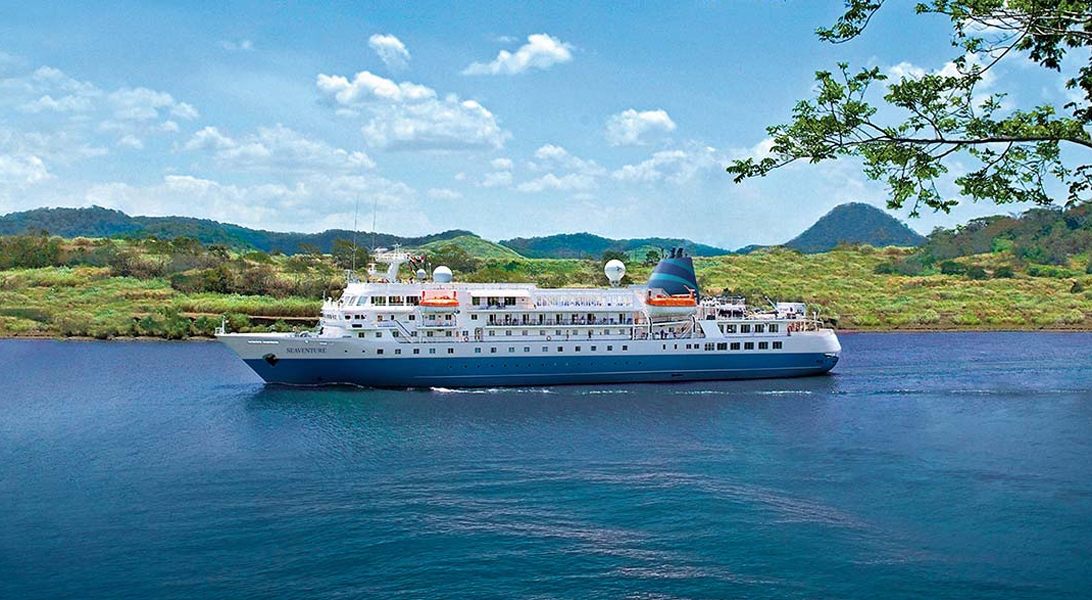





The images shown are for illustration purposes only and may not be an exact representation of what you find on the ship.
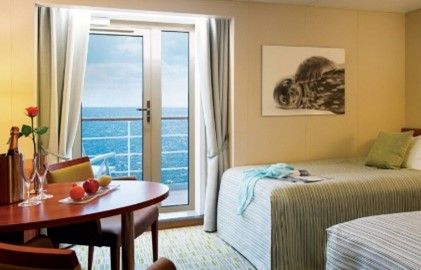
| Grade Code | From | To | |
| CAT-6 | Balcony Cabin (Deck 6) | £2,799 | £2,799 |
Balcony Cabins on Deck 6, measuring approximately 20.8 square metres (224 square feet) benefit from a larger living area plus fixed floor to ceiling window and fully glazed door opening on to a private balcony where you can take in the views and the fresh breeze without even having to leave your cabin.
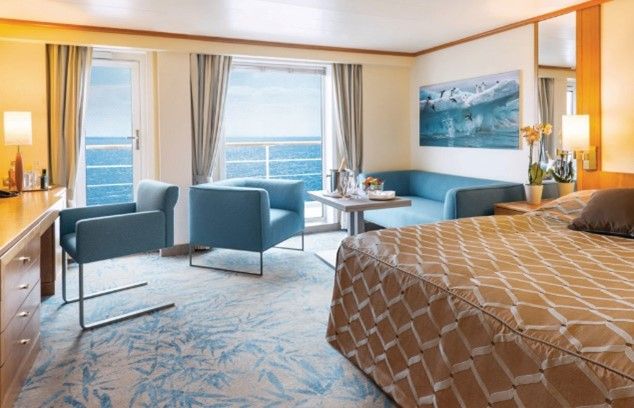
| Grade Code | From | To | |
| CAT-7 | Owner's Balcony Suite (Deck 7) | £3,099 | £3,099 |
Upgrade to one of our sumptuous suites on Deck 7. Measuring approximately 30.8 square metres (331 square feet), they allow for a generous living area with sofa, chair and table. They feature a large fixed floor to ceiling panoramic window and fully glazed door which opens out on to a private balcony for that extra touch of cruising glamour.
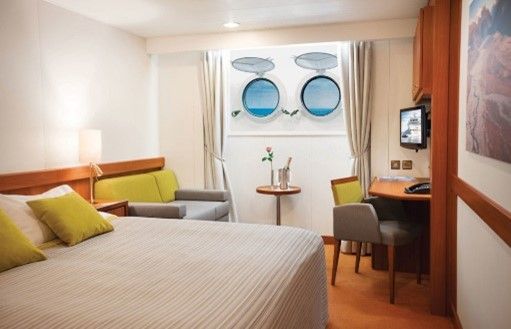
| Grade Code | From | To | |
| CAT-1 | Cabin with two Fixed Porthole Windows (Deck 3) | £1,999 | £1,999 |
Porthole Cabins on Deck 3 measuring approximately 17.5 square metres (188 square feet) have 2 fixed porthole windows.
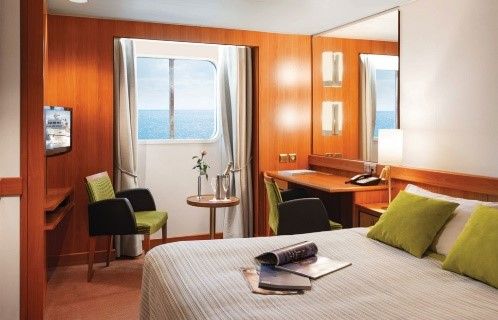
| Grade Code | From | To | |
| CAT-2 | Forward Cabin with Panoramic Window (Deck 5) | £2,199 | £2,199 |
| CAT-3 | Cabin with Panoramic Window (Deck 4) | £2,299 | £2,299 |
| CAT-4 | Forward Cabin with Panoramic Window (Deck 5) | £2,399 | £2,399 |
| CAT-5 | Cabin with Panoramic Window (Deck 5) | £2,449 | £2,449 |
Window Cabins and Forward Window Cabins on Decks 4 and 5, measuring approximately 17-17.5 square metres (183-188 square feet) feature a fixed picture window.
The images shown are for illustration purposes only and may not be an exact representation of what you find on the ship.
The images shown are for illustration purposes only and may not be an exact representation of what you find on the ship.
The images shown are for illustration purposes only and may not be an exact representation of what you find on the ship.
The images shown are for illustration purposes only and may not be an exact representation of what you find on the ship.
| 7 nights aboard the MS Seaventure | |||
| Port Taxes and Fees | |||
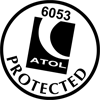 | ABTA and ATOL Protection* | ||
Date 19th Jul 2021 |
Nts 7 |
Oceanview £1,999pp |
Balcony £2,799pp |
Suite £3,099pp |
Date 19th Jul 2021 |
Nts 7 |
Oceanview £1,999pp |
Balcony £2,799pp |
Suite £3,099pp |
| Oceanview staterooms from | £1,999pp | ||
| CAT-1 | Cabin with two Fixed Porthole Windows (Deck 3) | £1,999pp | |
| CAT-2 | Forward Cabin with Panoramic Window (Deck 5) | £2,199pp | |
| CAT-3 | Cabin with Panoramic Window (Deck 4) | £2,299pp | |
| CAT-4 | Forward Cabin with Panoramic Window (Deck 5) | £2,399pp | |
| CAT-5 | Cabin with Panoramic Window (Deck 5) | £2,449pp | |
| Balcony staterooms from | £2,799pp | ||
| CAT-6 | Balcony Cabin (Deck 6) | £2,799pp | |
| Suite staterooms from | £3,099pp | ||
| CAT-7 | Owner's Balcony Suite (Deck 7) | £3,099pp | |
| Oceanview | Balcony | Suite | |
| (All prices are £GBP per person) | |||
| Mon 26th Jul 202126 Jul 21 | Please call for availability | ||
| Mon 16th Aug 202116 Aug 21 | 1,999 | 2,799 |
 |
| Mon 23rd Aug 202123 Aug 21 | 1,999 | 2,799 | 3,099 |
Fusion Cruises when selling travel arrangements is a trading name of The Midcounties Co-operative Ltd. Fusion Cruises is an Accredited Body Member of Midcounties Co-operative Travel Consortium. (ABTA:P6652, ATOL:6053).
Book with Confidence. We are a Member of ABTA which means you have the benefit of ABTA’s assistance and Code of Conduct.
Some of the flights and flight-inclusive holidays on this website are financially protected by the ATOL scheme but ATOL protection does not apply to all holiday and travel services offered on this website. This website will provide you with information on the protection that applies in the case of each holiday and travel service offered before you make your booking. If you do not receive an ATOL Certificate then the booking will not be ATOL protected. If you do receive an ATOL Certificate but all parts of your trip are not listed on it, those parts will not be ATOL protected. Please see our booking conditions for information, or for more information about financial protection and the ATOL Certificate go to: www.caa.co.uk
